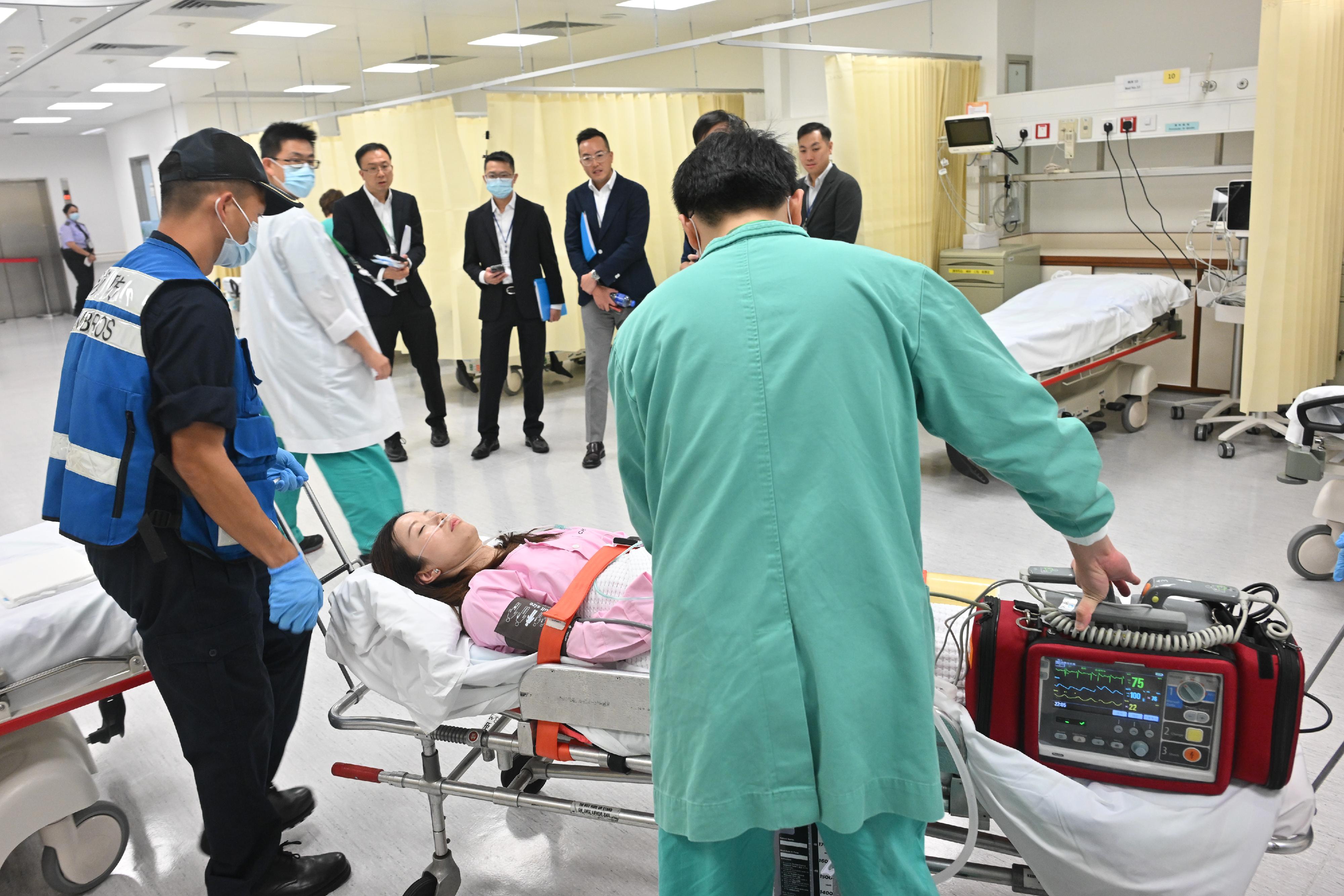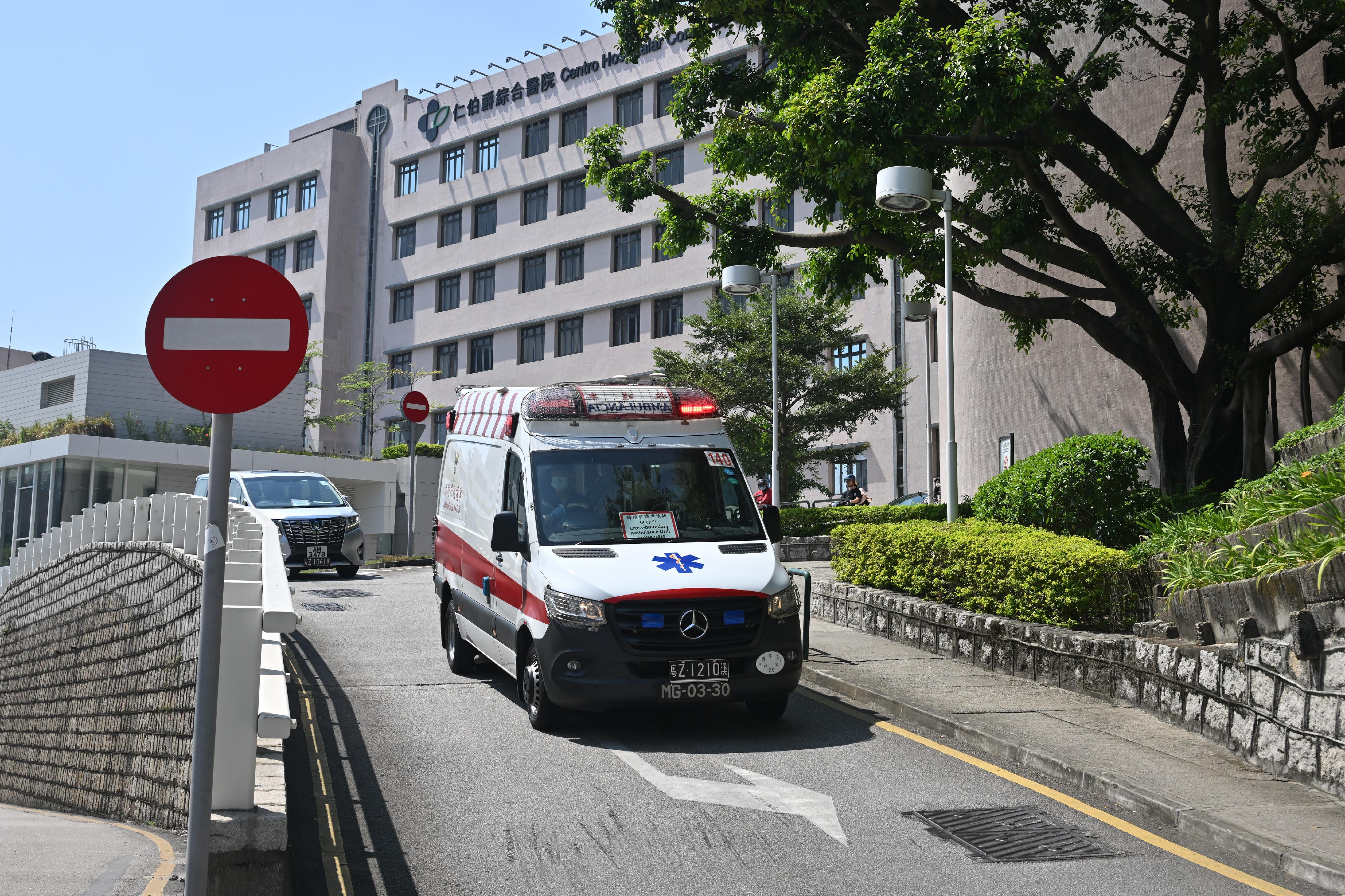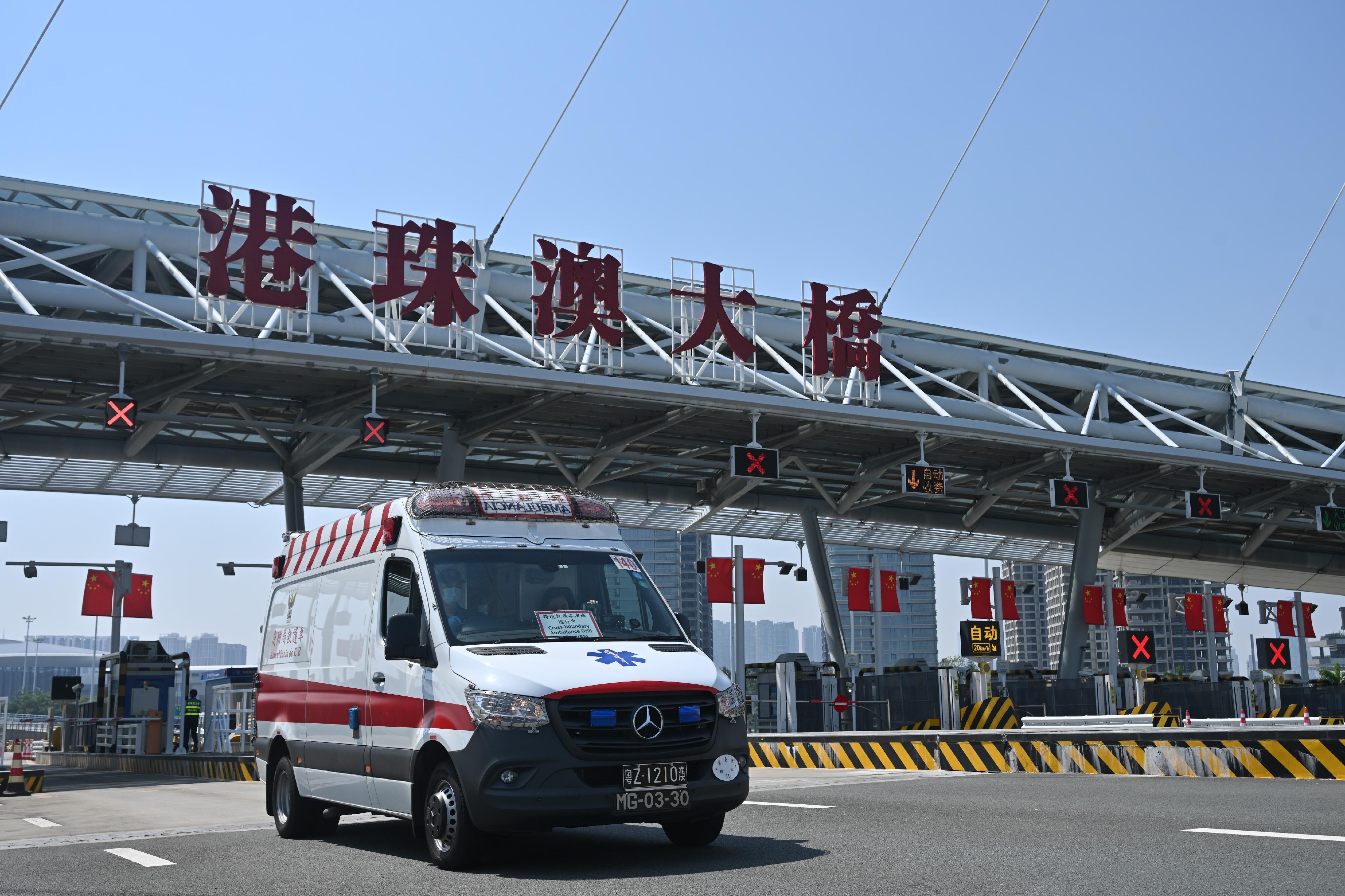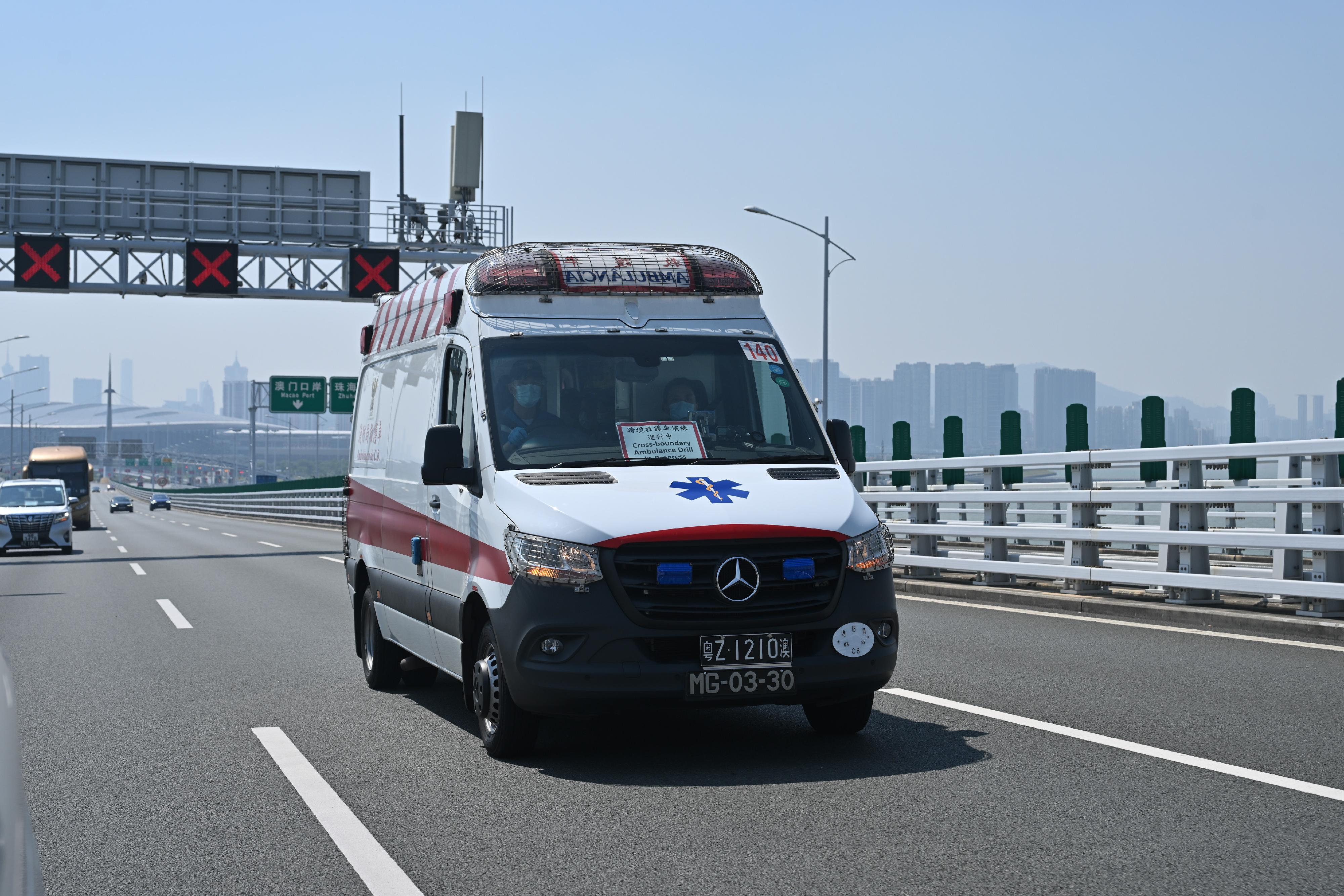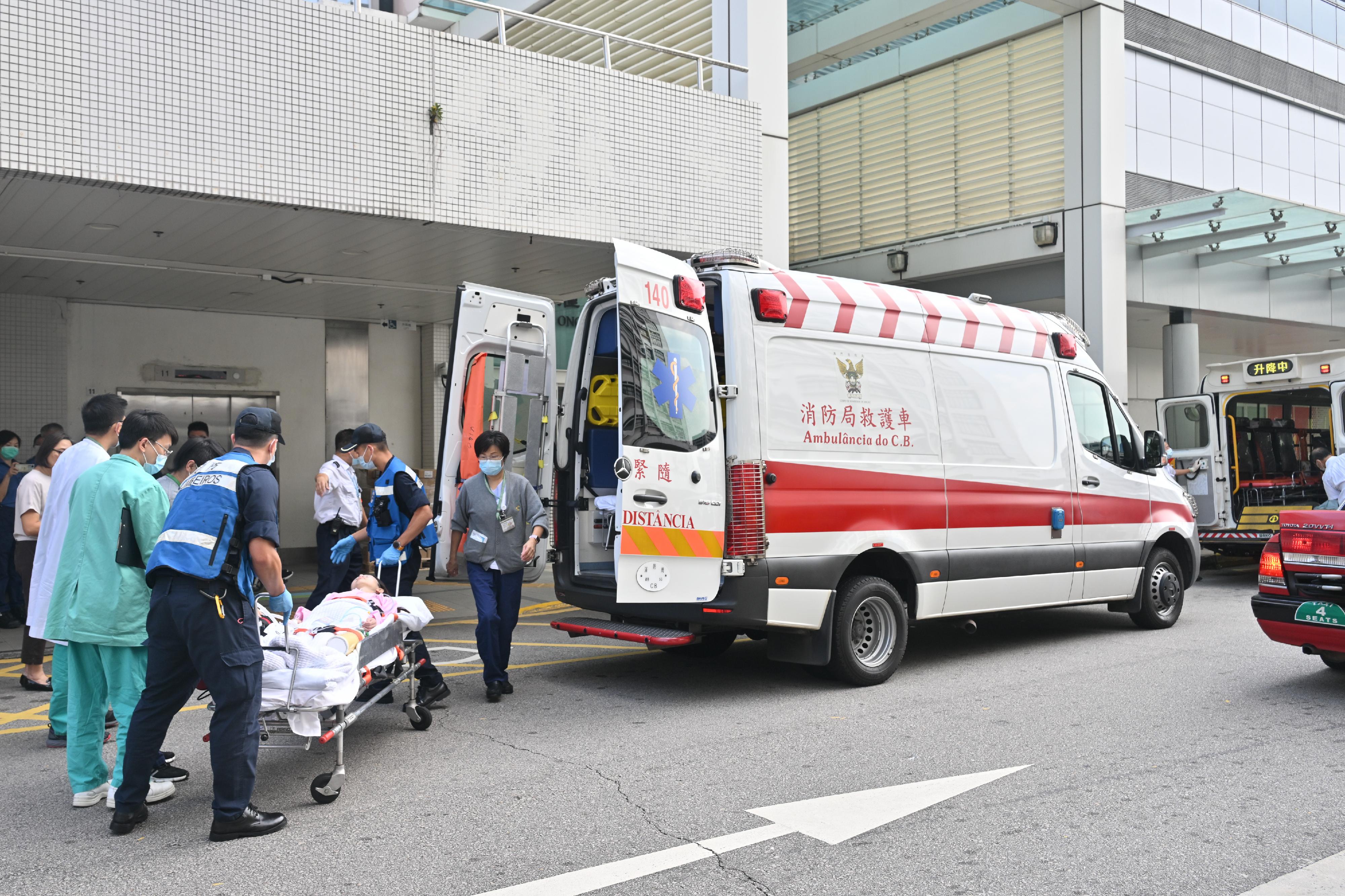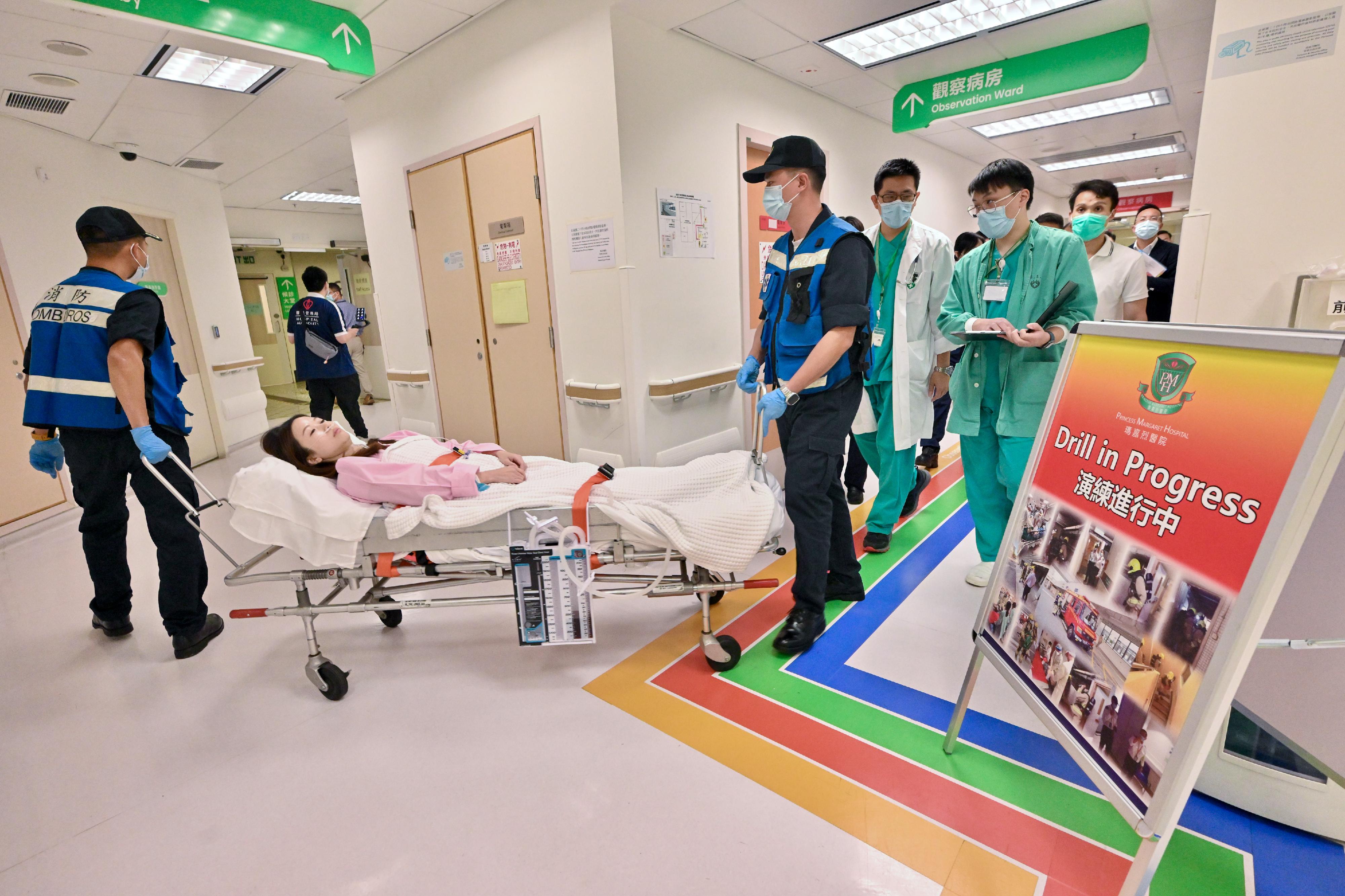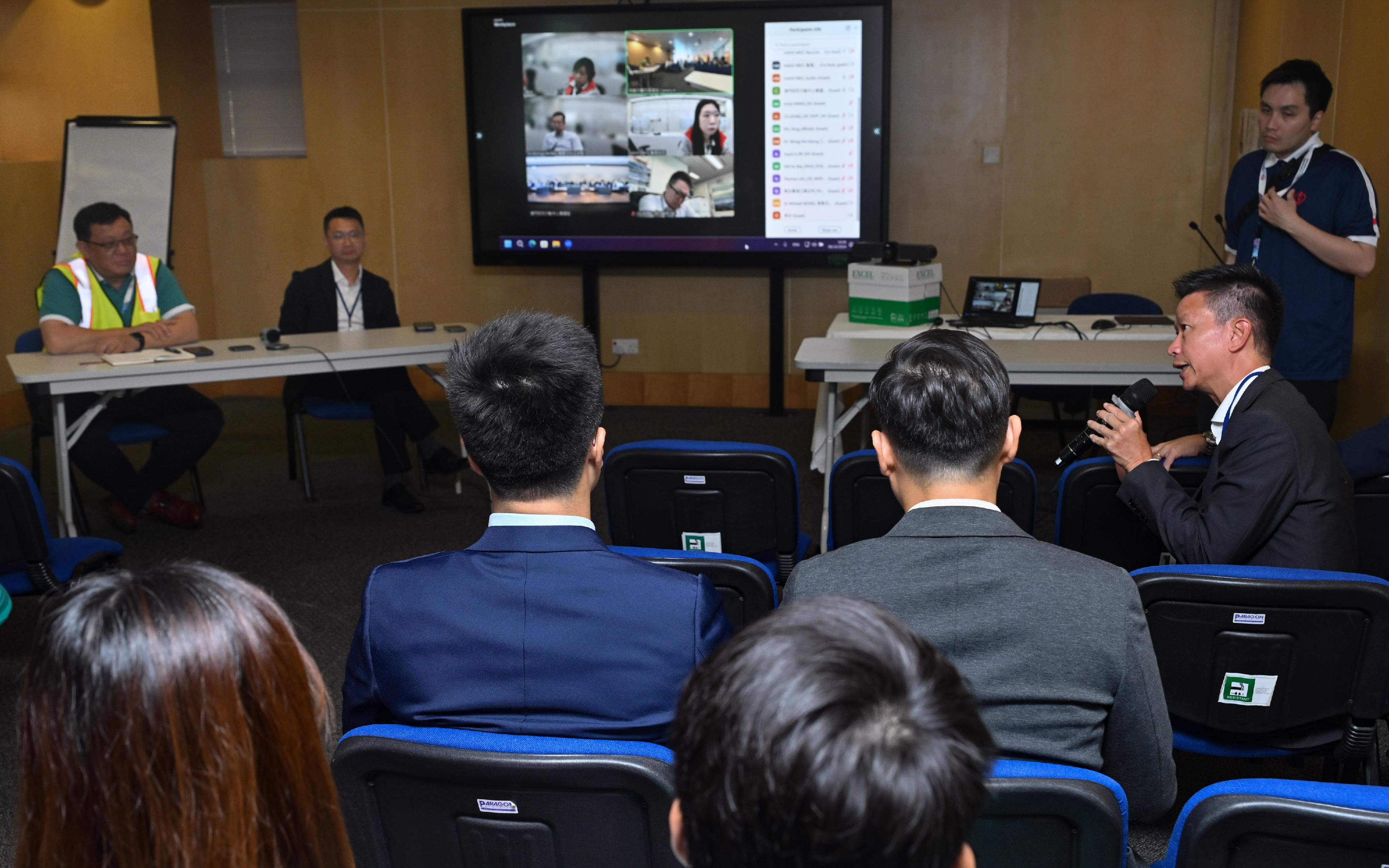The Hong Kong Special Administrative Region (HKSAR) Government, in collaboration with the Macao Special Administrative Region (Macao SAR) Government today (October 8), conducted a drill for the Pilot Scheme for Direct Cross-boundary Ambulance Transfer in the Greater Bay Area (Pilot Scheme), simulating the transfer of patients under the cross-boundary ambulance arrangement. The drill was conducted smoothly in general. Relevant departments of the two SAR Governments will review the arrangement, with a view to launching the Pilot Scheme within this year.
Today's drill mainly aimed at testing the routing of the cross-boundary ambulance between Conde S. Januario Hospital (CHCSJ) of Macao and the designated hospital in Hong Kong (i.e. Princess Margaret Hospital (PMH)), as well as the immigration arrangements of the ambulance. After departure from CHCSJ of Macao, the designated Macao cross-boundary ambulance travelled to PMH via the Hong Kong-Zhuhai-Macao Bridge (HZMB), before returning to CHCSJ of Macao via the HZMB.
The Secretary for Health, Professor Lo Chung-mau, said, "The Chief Executive announced in the 2023 Policy Address the exploration of a cross-boundary ambulance transfer arrangement in the Guangdong-Hong Kong-Macao Greater Bay Area (GBA). The Pilot Scheme will first roll out the arrangement of a direct ambulance transfer of patients from designated hospitals in Shenzhen and Macao to designated public hospitals in Hong Kong. Further to the smooth completion of the drill conducted by the HKSAR Government in collaboration with the Guangdong Provincial Government and the Shenzhen Municipal Government on August 23 this year, I am glad that the HKSAR Government and the Macao SAR Government have also made today's drill a success through concerted efforts, further streamlining the flow of a direct cross-boundary ambulance transfer to get better prepared for the launch of the Pilot Scheme."
As a facilitation to the drill arrangement, the HKSAR Government published in the Gazette last Friday (October 4) the exemption of designated Macao cross-boundary ambulances from the Road Traffic (Registration and Licensing of Vehicles) Regulations (Cap. 374E) (the Regulations) during a specified period, pursuant to regulation 3(c) of the Regulations. The Governments of the two places are striving to finalise as soon as possible the long-term arrangements for designated Macao cross-boundary ambulances to enter Hong Kong.
Apart from the entry arrangement of vehicles into Hong Kong, the Health Bureau is also in discussion with relevant departments of the Macao SAR Government on the implementation details regarding the entry of medical items and personnel on the direct cross-boundary ambulance into Hong Kong. In particular, CHCSJ of Macao will deploy healthcare personnel to escort patients with clinical needs on the ambulance to a designated public hospital in Hong Kong. The HKSAR Government will ensure compliance by the doctors concerned with the relevant laws of Hong Kong, such that they can continue to carry out the necessary medical procedures for the patients on board the ambulance upon entry into Hong Kong. The Medical Council of Hong Kong has issued a promulgation regarding limited registration in accordance with the relevant provisions of the Medical Registration Ordinance (Cap. 161). The Hospital Authority (HA) is making limited registration applications for the Macao doctors who will provide support aboard the direct cross-boundary ambulances.
Under the Pilot Scheme, the cross-boundary ambulance mechanism will only be activated when a prior agreement between the sending hospital (i.e. the University of Hong Kong – Shenzhen Hospital or CHCSJ of Macao) and the receiving hospital (i.e. designated public hospitals under the HA of Hong Kong) has been reached in advance, with the medical needs, safety and interests of patients as the prime concerns, and a mechanism in place to avoid abuse. Subject to the effectiveness and operational experience upon the launching of the Pilot Scheme, the HKSAR Government will consider the arrangement for the next phase of the Scheme.
Follow this news feed: East Asia







